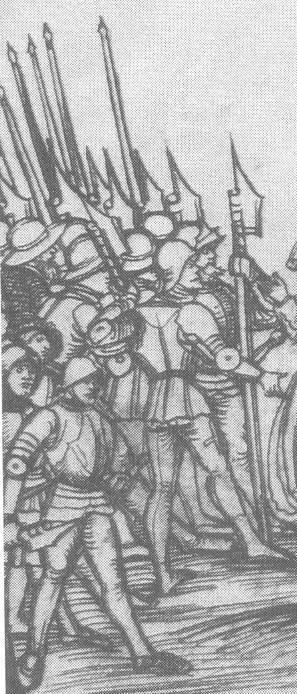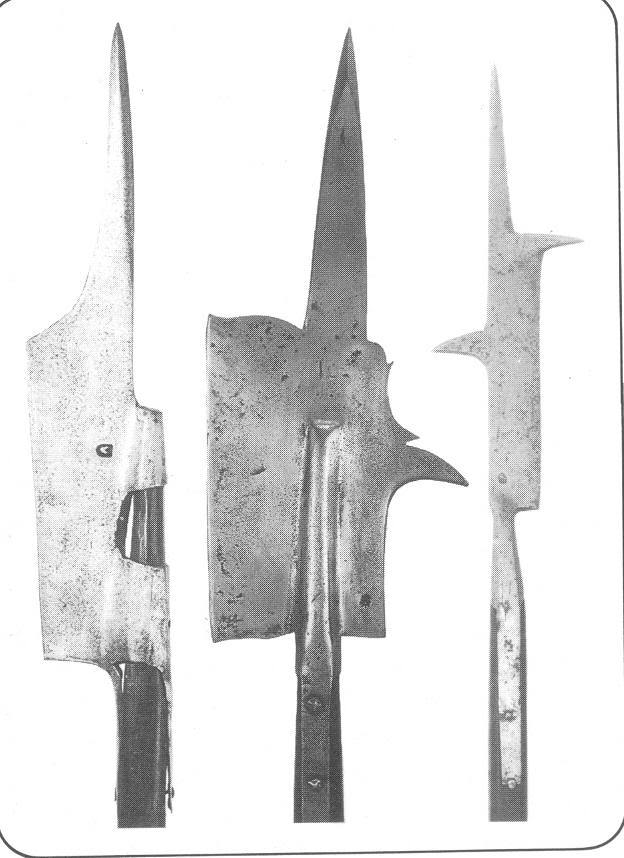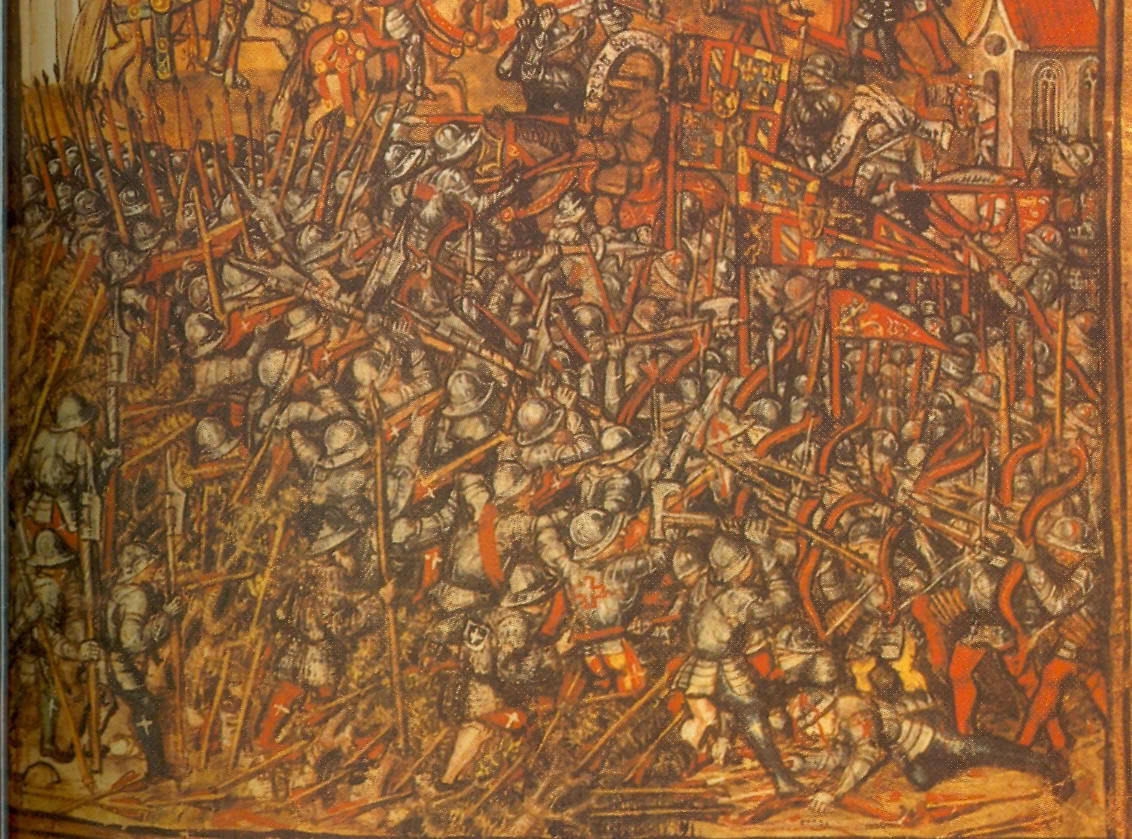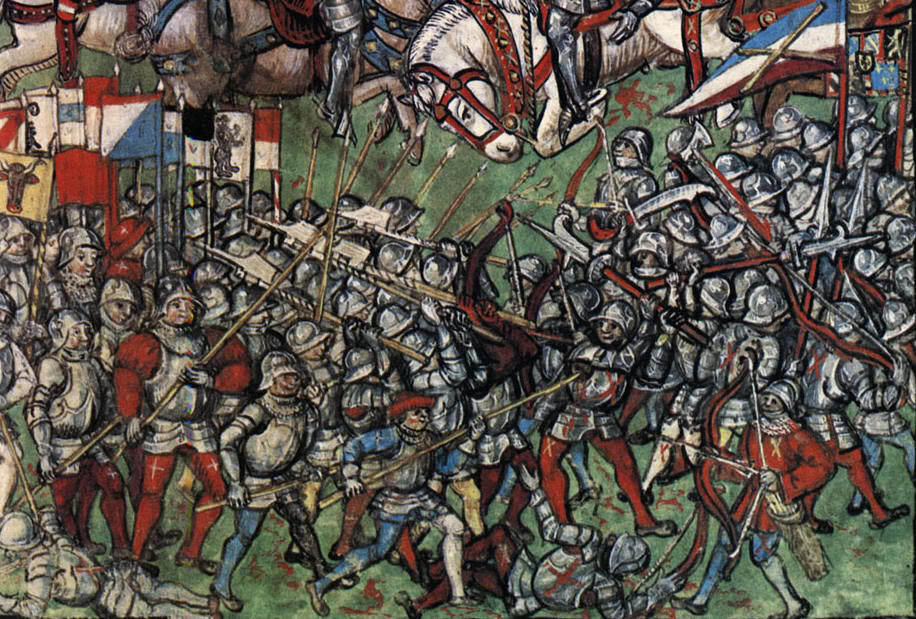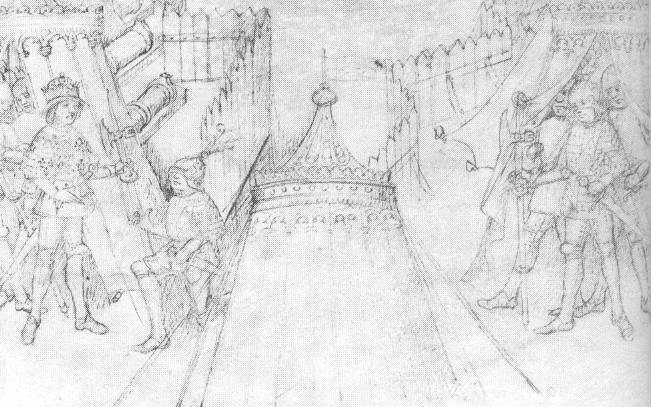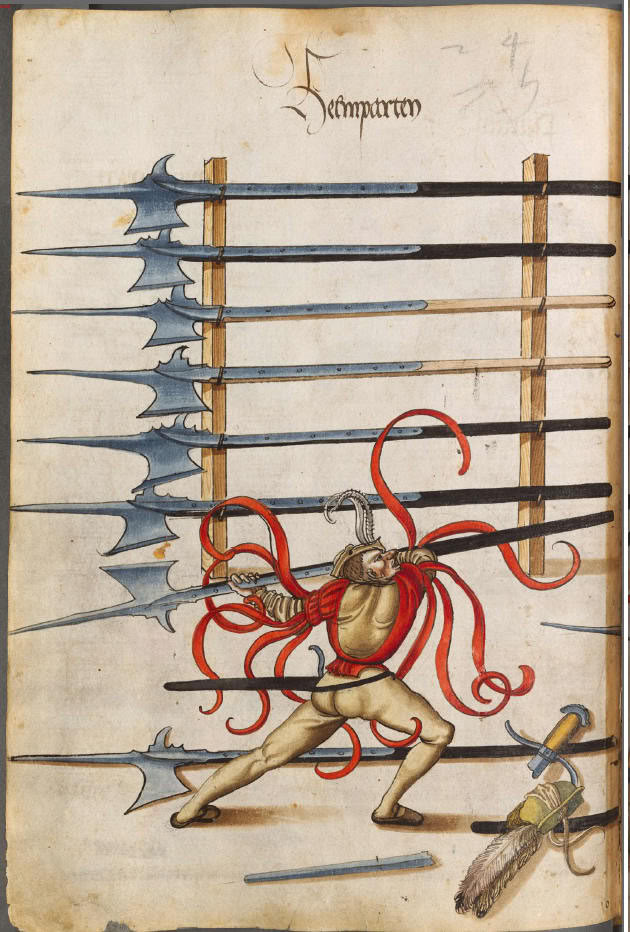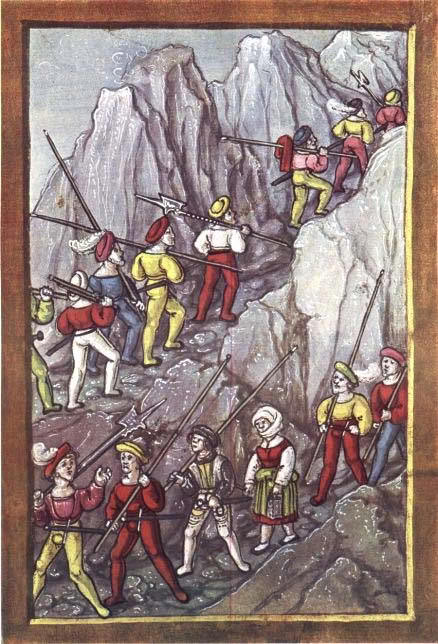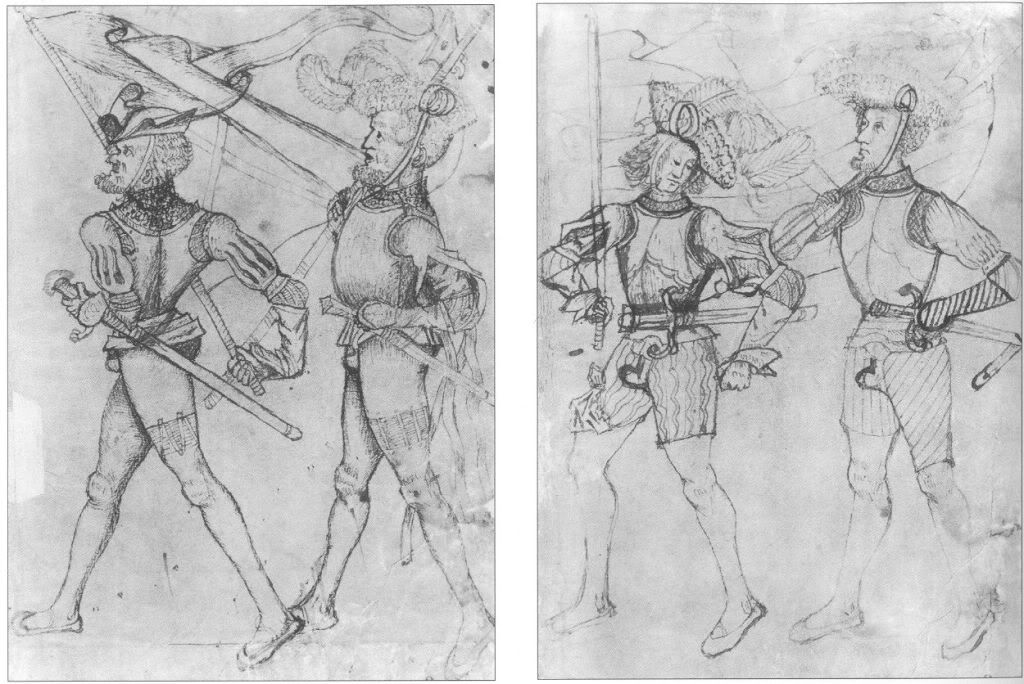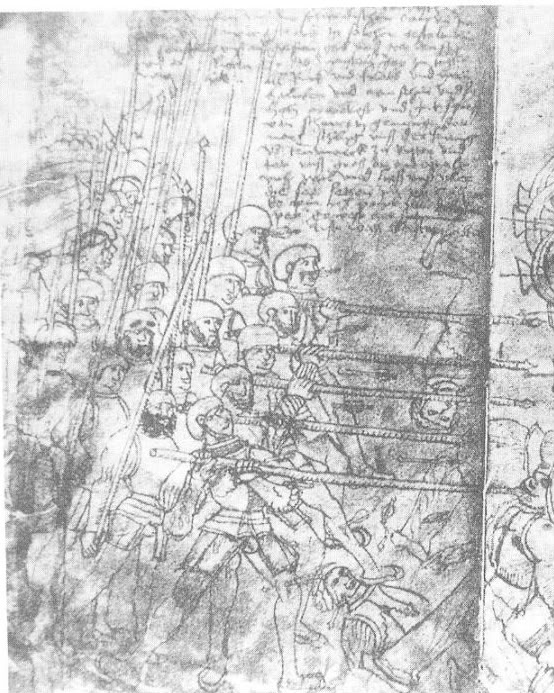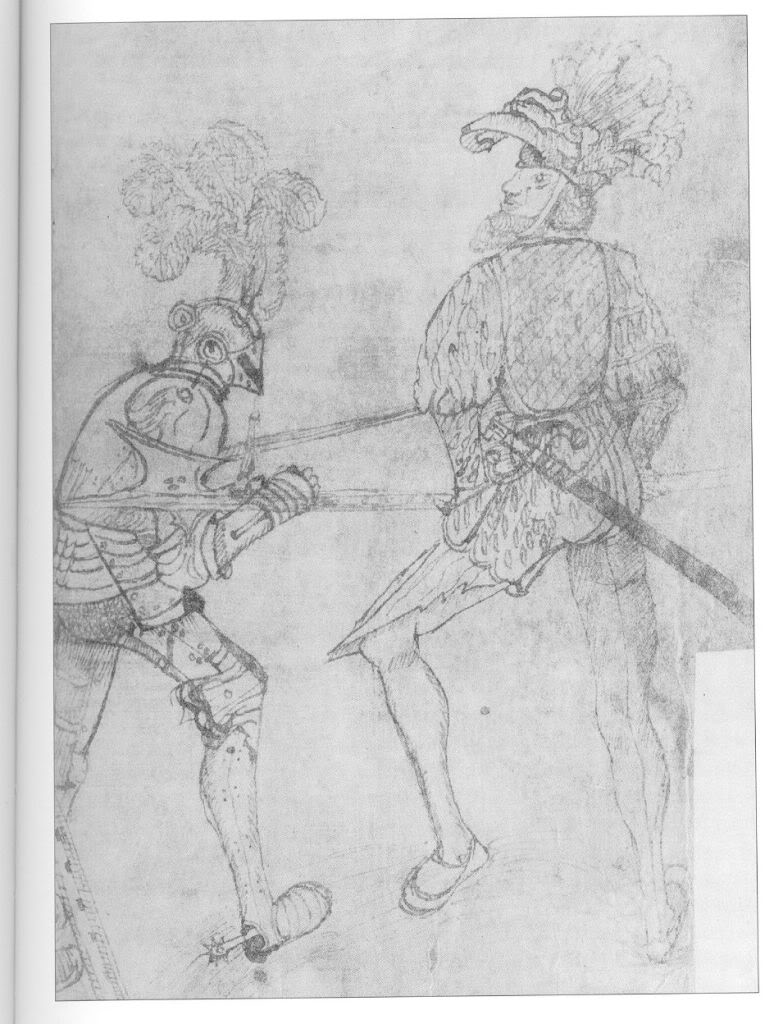The Halberd and Other European Polearms 1300-1650 by George Snook, MD.(1998)
Snook indicates that the term halberd is can cover a variety of different shaped shafted weapons of a similar nature. The first mention of a halberd is found in a poem about the Trojan War by Konrad of Wurzburg written some time before 1287. It mentions 6,000 men carrying halberds.
The general characteristics are described below:
| Quote: |
| The Halberd is an axe blade surmounted by a thrusting point backed by a pointed beak. this three part head is secured to a six to eight foot long shaft by a number of nails generally inserted through long straps known as langets. The langets extend along the shaft from the head towards the butt. The nials may be fastened from one side straight through the shaft to appear in a hole in the opposite langet.... . The head weighs about four pounds depending on the size of the blade. |
Snook goes on to differentiate the types of polearms, thrusting weapons such as spears and pikes, Cutting polearms such as the glaive and bardiche, purcussions polearms such as the spiked club, flail and horseman's hammer, and combination polearms such as the english bill - the pole axe is classified within this group.
Snook described the poleaxe as a variant of the halberd which was popular with the knightly class for use in foot combat and tournament:
| Quote: |
| Its major use was "a outrance" (serious combat) using sharpened weapons rather than "a plaisance" (friendly combat) in which blunted weapons were used and little harm done to an opponent and was probably the answer to sturdier armour. It had a spear point and an axe blade but the beak was replaced by a hammer with rudimantary knobs to serve as a crushing tool. They were frequently ornamented with brass inlays and they are heavier than the halberd with a shorter shaft, and might have a rondel for a hand guard. It appears in the first half of the 15th century and disappears shortly after thereafter. |
